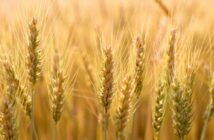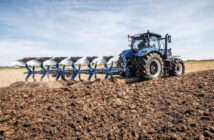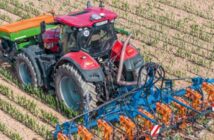Cereal crops across the country are at higher risk of barley yellow dwarf virus (BYDV) infection this autumn so every effort must be taken to mitigate any impact.
The threat follows a mild season just gone, which resulted in considerable winged aphid activity and widespread reports of BYDV infection in spring crops particularly, but not exclusively, across northern and western regions.
Furthermore, recent wet weather combined with generally milder conditions in southeast England is allowing a good flush of cereal volunteers and grass weeds that creates a “green bridge” for aphids to migrate into, and subsequently infect, newly emerging crops this autumn, warns Kent and Sussex-based Hutchinsons agronomist Elle Pace.
“Aphids are around so growers have got to be vigilant and control any green bridge with cultivations or by spraying off with glyphosate. Cereal volunteers are the main food source for aphids, but any new green plant growth can help them colonise.”
The two key species responsible for BYDV transmission are the grain aphid and bird cherry-oat aphid.
Strong case for seed treatment
Crops can be infected with BYDV from emergence through to growth stage 31, so the most effective way to protect early growth is to use a clothianidin-based seed treatment (as in Deter), Hutchinsons technical director Dave Ellerton says.
“I’d do this as routine for any early-sown winter crops this year.”
Deter typically provides six to eight weeks protection, after which time he says a follow-up pyrethroid can be applied if required, depending on weather and aphid activity.
Ms Pace says many growers have learnt from recent high-pressure BYDV years such as 2015 and are generally better prepared to manage the risk by using a seed treatment and well-timed follow-up pyrethroid spray.
The move to later drilling for black-grass control across many parts of the southeast has also helped mitigate BYDV risk, which is greater in early-sown winter crops, she says.
Fellow Hutchinsons agronomist Andrew Goodinson adds that although seed treatment can be perceived as an additional expense compared with just a pyrethroid, it is worthwhile, especially in areas where other crop harvests, such as potato and apple, increase autumn workloads, making it tricky to spray.
“The seed treatment also offers a deterrent to slugs, which is an added advantage within certain rotations.”
He also recommends Deter as a routine baseline protection on all winter barley and oats, plus on any wheat sown after oats, rape or grass, with a follow-up pyrethroid spray as required.
Mr Goodinson reminds growers the duration of protection afforded by Deter reduces when sowing at lower seed rates, as less total active ingredient is applied. For example, reducing seed rates from 180kg/ha to 120kg/ha typically results in two weeks less persistence, which must be considered when timing follow-up treatments, he says.
Consider drilling date
Early-sown winter crops are at greatest risk from BYDV infection, so drilling later after the main aphid migration period during September and October could help reduce the threat.
However this is not always practical and Dr Ellerton cautions against using BYDV risk to determine drilling date. “I’d always go by other factors such as take-all or black-grass pressure to set drilling date, then consider what that means for BYDV risk and use the most appropriate controls for that situation.”
There is a clearer benefit from adjusting drilling date in spring crops, where earlier drilling allows crops to get established ahead of the main spring aphid migration, says Hutchinsons northern regional technical manager Cam Murray.
“BYDV is a persistent virus that is very hard to control in spring crops where you don’t have the natural break in aphid activity you usually get over winter. Earlier drilling is one of the best control options.”
He reminds growers that pyrethroid resistance has been found in grain aphids, reinforcing the need to adopt integrated chemical and cultural controls.
If grain aphids are present, Dr Ellerton says pyrethroids still offer worthwhile efficacy, but he recommends using a high dose of a stronger active ingredient such as lambda-cyhalothrin.
Tips for managing BYDV
- Delay sowing autumn crops to emerge after main aphid migration
- Use a clothianidin seed treatment as baseline protection in winter crops
- Follow up with pyrethroid if required
- Monitor aphid pressure closely – see https://cereals.ahdb.org.uk/monitoring/aphid-news/aphid-monitoring.aspx
- Remove any “green bridge” for aphids e.g. grassweeds or volunteers in stubbles
- Drill spring crops earlier to outgrow any damage from spring aphid migration in April/ May
- Consider beetle banks to increase natural predators (e.g. ground beetles, parasitoids, spiders).




